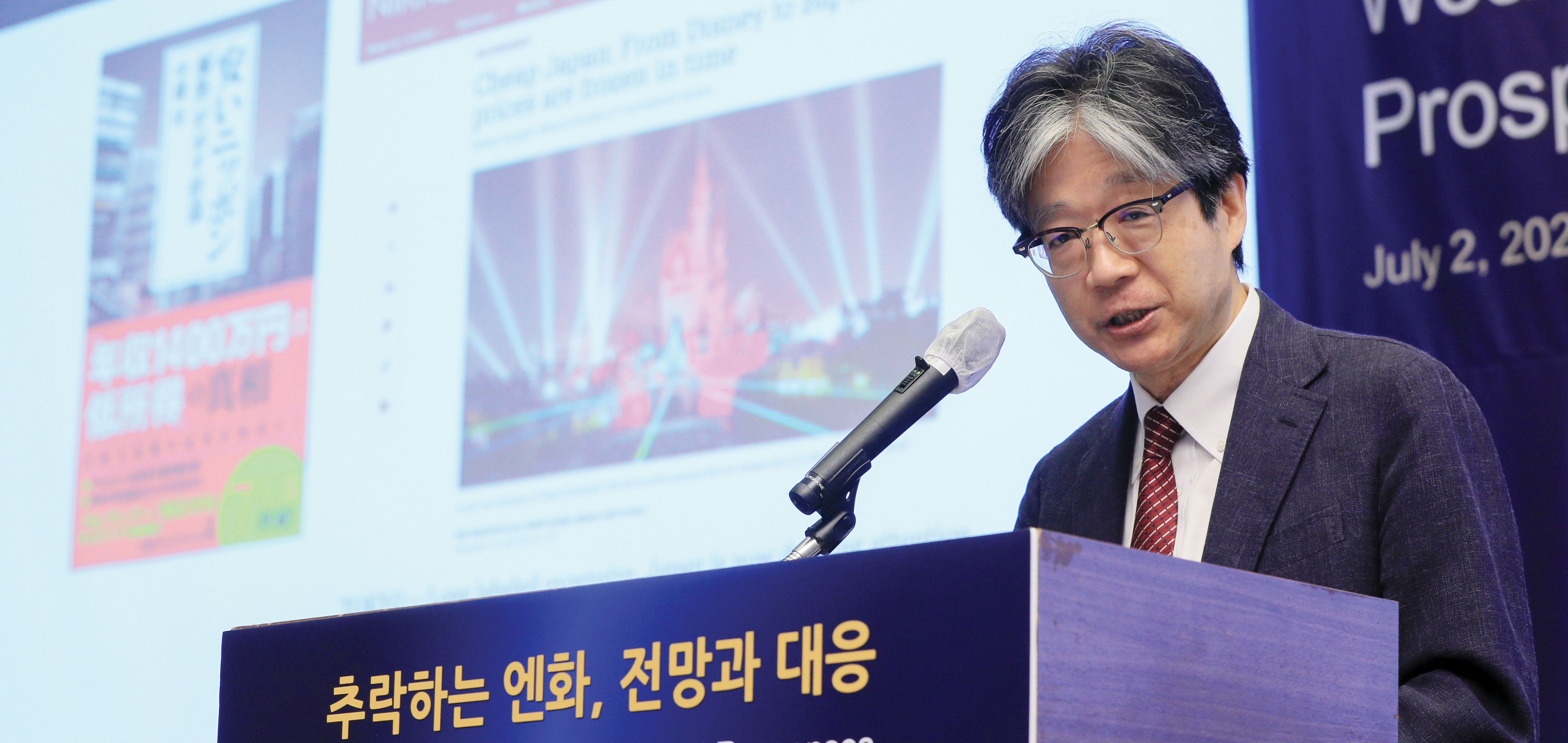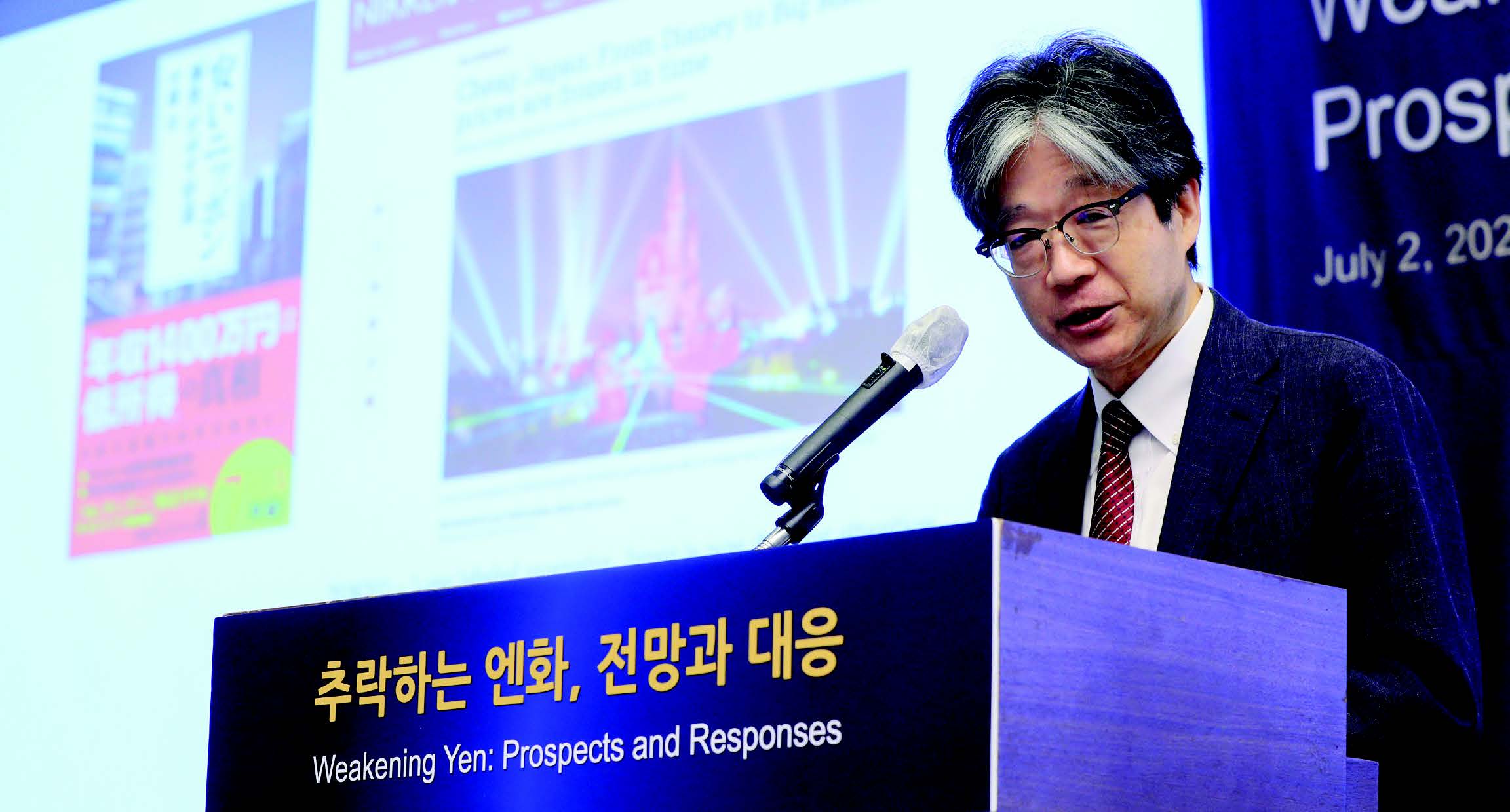Global Risks Outlook
Cheap Japan: Current and Future
Impacts of the Super Weak Yen
Summary of the Super Weak Yen Phenomenon
-
1
The causes of the weak yen are rigid wages and prices, along with differing monetary policies between the US and Japan. -
2
Since the spring of 2022, normalization of wages and prices has begun, followed by the recent progress in normalizing policy interest rates. This process is expected to continue into next year, which will ameliorate the excessive depreciation of the yen. -
3
While the timing of the yen’s appreciation remains uncertain, the excessive depreciation of the yen is expected to be resolved gradually.
With the yen generally weak again this year, FKI held the second of its Global Zoom Seminar series titled “Weakening Yen: Prospects and Responses.” The seminar kicked off with a keynote speech by Professor Tsutomu Watanabe of the University of Tokyo, who analyzed the causes of the weak yen and forecast future trends.
The 2021 book Cheap Japan has frequently been used as a key source in explaining various issues in the Japanese economy, such as the weakening yen and inflation.
Accelerating Depreciation of the Yen
The “cheap Japan” phenomenon is linked to the real exchange rate. Japan’s real exchange rate continued to decline until the mid-1990s, and the yen’s depreciation has accelerated since 2013. This is because the PPP1 deviation in the price of traded goods between Japan and the US began to grow in the mid-1990s. The international relative price of non-traded goods between the two countries also influenced the depreciation of the real exchange rate.
Around 2013, some inflation was created as a result of various monetary easing policies and nominal exchange rate depreciation began, leading to a rise in PPP by 2015. However, it is important to note that the extent of nominal exchange rate depreciation was much greater than the PPP deviation. During this period, the increase in PPP deviation led to significant real exchange rate depreciation. Despite the monetary easing, PPP did not react strongly due to Japan’s price rigidity.

Tsutomu Watanabe
- Professor at the University of Tokyo (2011-present)
- Senior Economist at the Bank of Japan (1982-1999)
From Chronic Deflation to an Era of QT2
Japan’s CPI3 and nominal wages remained almost flat from the mid-1990s until recent years—a unique phenomenon in Japan referred to as “chronic deflation.” However, signs of normalization in Japan’s prices, wages, and monetary policy began to appear two years ago in the spring of 2022. While most Japanese consumers had strongly resisted price increases in the past, inflation expectations have grown over the past two years. Japanese companies have also passed on rising costs through price increases, which in turn led to workers demanding higher wages. The Bank of Japan ended its unconventional monetary policy and raised policy interest rates for the first time in 17 years, embarking on a path toward interest rate normalization. Japan is moving beyond two decades of chronic deflation and entering an era of QT.
Normalization Process to Settle into a New Cycle
The Japanese economy has entered a new cycle. However, the sustainability of these trends is uncertain. It is hoped Japan can transition to and maintain a normalized environment within this new cycle. The first reason for this is the changed inflation expectations among consumers. Today’s consumers have higher inflation expectations, and the Bank of Japan is also meeting such expectations. The second reason is rising wages.
While the wage increase rate was less than 0.5% between 2014 and 2016, it has been around 1.3%—a significantly higher level—since 2023. Finally, the policy interest rate had remained close to 0% since the 1990s, and even the recent increase from 0–0.1% to 0.25% does not amount to a radical change. Based on the Taylor Rule,4 however, the policy interest rate is forecast to approach 2% by the end of 2025, signaling full normalization. With this monetary policy normalization, discussions around QT and current account issues are also underway, and normalization in these areas is expected to take place by next year.
- 1. Purchasing Power Parity, PPP.
- 2. Qualitative Tightening, QT.
- 3. Consumer Price Index, CPI.
- 4. A central bank’s interest rate decision-making guideline that determines the appropriate interest rate level based on economic growth and inflation rates.
